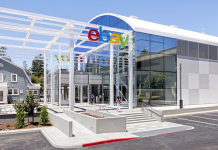Tom Konrad CFA
If I could only own one stock, it would not be a stock. It would be a Canadian “income deposit security:” New Flyer Industries which trades in Toronto as NFI-UN.TO and on the Pink sheets as NFYIF.PK.
Cyclical industry
New Flyer is the largest of the five suppliers of heavy duty transit buses in North America. Unlike its competitors, New Flyer is focused solely on transit bus sales, parts, and service. The company has industry leading technology, offering a full range of bus styles and propulsion systems, including diesel, liquid or compressed natural gas, gas and diesel hybrids, electric trolley buses, and hydrogen. They are currently developing a pure electric version.
suppliers of heavy duty transit buses in North America. Unlike its competitors, New Flyer is focused solely on transit bus sales, parts, and service. The company has industry leading technology, offering a full range of bus styles and propulsion systems, including diesel, liquid or compressed natural gas, gas and diesel hybrids, electric trolley buses, and hydrogen. They are currently developing a pure electric version.
Transit buses are a cyclical industry which is currently in a downturn. Municipal transit agencies are the main customers, and bus manufactures’ sales move in line with transit agencies’ budgets.
Many transit agencies currently face budget cuts even as high gas prices stimulate demand. That’s because fare box collections typically only cover about a third of the costs of running a transit agency, the rest must come from local, state, and federal transfers.
Both New Flyer and their competitors have shed workers to better match their production capacity with lower demand, but the remaining capacity is still enough to keep the bidding for contracts very competitive.
The Payout
The New Flyer income deposit security (“IDS”) consists of one common share and a C$5.53 principal 14% subordinated note. The monthly distribution currently consists of a C$0.03298 cash dividend and a C$0.06453 interest payment on the note, for a total monthly distribution of C$0.0975. At the closing share price $7.79 on June 10th, that’s a 15% yield.
Unfortunately, the increasingly competitive environment means the company will probably need to cut payments to IDS holders in the coming months. New Flyer has made significant progress cutting costs and improving operational efficiency, yet an increasing tax rate and lower selling prices have reduced distributable income. Distributable income has been roughly equal to IDS distributions over the last two quarters, while the long term average distribution was only 80% of distributable income. Since the company’s tax rate is set OT increase over the next year, and the competitive environment is unlikely to improve much before then, payouts will almost certainly need to be reduced.
Strategic Options
New Flyer’s board is in the process of evaluating a number of strategic options, both to better cope with the cyclical nature of the industry and the unsustainable distributions. On the recent May 13 conference call (MP3) they stated that they expect to announce their new strategic plan “in the next couple of months.” I take that to mean by the end July. Including cutting the dividend, they are looking at acquisitions in adjacent industries with the intent of making their overall business less cyclical. I take this to mean other types of buses, perhaps light duty transit or intercity motor coaches, or the acquisition of a parts and maintenance company. Investor worries surrounding the upcoming decision seem to have driven the recent price drop from the C$11.50-12.00 range to the current price below C$8.
Any acquisition would put more pressure on company resources, so I consider it a certainty that the dividend will be cut. The interest payment, however, cannot be eliminated unless the notes are called. The first opportunity to call the notes will be in 2012, for 105, meaning that note holders would need to be paid C$5.8065 (which would have to be raised through other borrowing or the sale of stock), and IDS holders would still retain their equity interest in the form of a common share.
I can’t predict if the company will call the notes, but the Q1 2011 book value per share was US$2.36 or C$2.32, so the combined book and principal value of an IDS is C$7.85, above the current stock price. For a company that will almost certainly continue to pay the interest on the subordinated note until the notes are called, this seems like a bargain. The interest payment alone amounts to a 10% yield at C$7.79. New Flyer should be able to remain current with these interest payments even if income falls another 30%, which I consider unlikely.
Past and Future Trades

I last took an in-depth look at New Flyer in October 2009, when the stock was trading around $9 because the Chicago Transit Authority had delayed a large order and thrown off production. I expected the company to work though these problems, and advocated buying at that price.
Since then the stock rose as high as C$12 this February. I began reducing my holdings when the price exceeded $11 mainly for rebalancing, which left me with the capacity to purchase more as the stock has fallen since March, making purchases at $10.50, $9, and $8. I will probably make one more purchase if it falls as far as $7. Despite the fact that the current price seems extremely cheap for an income investment, the overall uncertainly and current general market decline might conspire to drive it that low again.
No matter what the structure, New Flyer is an excellent value company at the current price. I like the income security nature of the current structure, and would be happy to hold the New Flyer IDS at current prices even if the dividend is reduced to zero, but I’d also be comfortable if New Flyer converts to a more traditional equity structure. If the current IDS were somehow converted into straight equity trading at the same price (C$7.79), the P/E ratio would be about 8, after taking into account the reduced earnings due to the loss of the interest tax shelter. (This tax shelter arises because interest on the note is treated as an expense for tax purposes, while dividends would not be.)
Although I expect the price to recover only slowly from whatever low it finds, I don’t see any reason to delay my purchases until it is back on the upswing, since the current 15% yield seems an excellent compensation for my investment.
DISCLOSURE: Long NFYIF.
DISCLAIMER: Past performance is not a guarantee or a reliable indicator of future results. This article contains the current opinions of the author and such opinions are subject to change without notice. This article has been distributed for informational purposes only. Forecasts, estimates, and certain information contained herein should not be considered as investment advice or a recommendation of any particular security, strategy or investment product. Information contained herein has been obtained from sources believed to be reliable, but not guaranteed.







I was researching New Flyer yesterday, wanting to buy more, but wondering what the company was worth now given the restructuring that appeared imminent. This article was extremely helpful and answered all of my questions. I bought more at $7.50. Thanks as always! I love it when you profile specific stocks, especially old favorites. Please consider an update on Waterfurnace, currently my biggest holding.
The companies unexpected press release this week clarifies things even more. Sounds like they will call the notes by Aug 2012 and convert to a traditional equity structure with a dividend of approximately 50% of the current distribution level.
Thanks, D Lane, glad I can help. I have an upcoming article from a guest about geothermal heat pumps, but nothing looking at the financials. I will probably get back to waterfurnace in the next few months; I’m trying to focus on EE stocks this year, in much the same way I focused on Peak oil stocks last year.
Hi Tom,
I wasn’t sure exactly how to interpret the company’s press release. If I understand correctly, in order to convert to a traditional equity structure, they have to call the subordinated notes and pay holders $5.8065 per share. That would leave holders with only common shares. The company said that, after the common share conversion, they anticipate paying an annual dividend of about 50% of the current IDS distribution of $1.17 share. However, $0.58 per share annually would be a huge dividend increase from the current dividend of $0.396 that comes from the common shares alone. Moreover, it would suggest a yield of over 25% on the current $1.96 we are paying for common shares (after deducting the call price of the subordinated note from the IDS). This can’t possibly be right. Do you know what I am missing? Might the company mean “about 50% of the current yield” instead of “50% of the current payout?” That would seem more reasonable. It would mean that the way they phrased the press release was a more than a bit misleading though, which would seem odd given that New Flyer has always been open and fair with its investors in the past. Any thoughts?
Robert,
The company was not specific about how they would achieve the share conversion. My best guess is that they will offer note holders the right to convert their shares into equity at a favorable rate. Those note holders who do not convert will then be called next year, and a secondary offering of equity to the general public will be used to fund the call of the notes.
But that’s just a guess based on how I might go about it.
The details on the swap are out: http://gree.nr/Cbpc
It looks pretty much like what I guessed in my comment above, plus a not-very-veiled threat to IDS holders who choose not to convert that they will not be able to trade their IDS’s for a year until the notes are called.
If less than 50% of the IDS holders take them up on the exchange offer, they will instead cut the divided to 0, leaving everyone with just the interest on the note… After tax, that’s not much better than the dividend on offer on converted shares, so they seem to have made a compelling case that the best thing to do is convert.